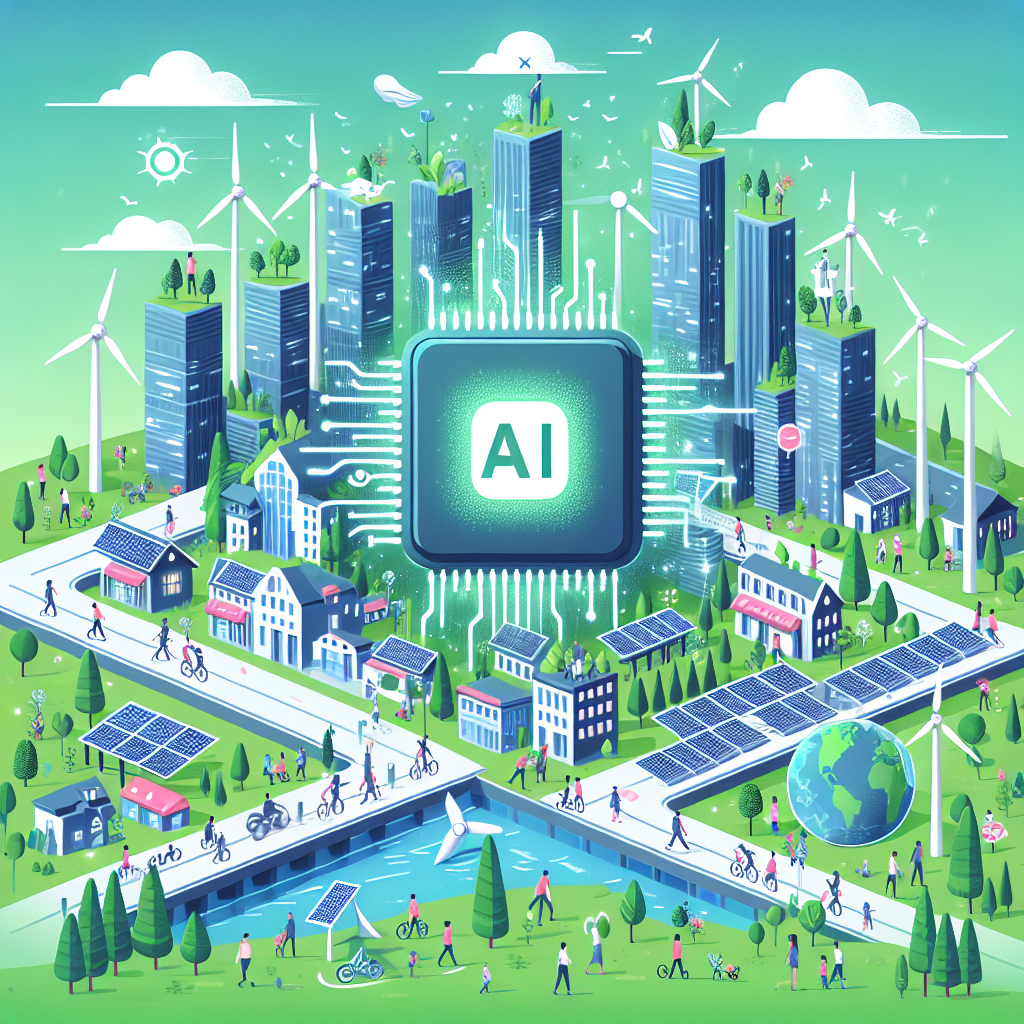Artificial intelligence (AI) is revolutionizing the way we approach renewable energy development. By leveraging the power of AI, we are able to optimize energy production, increase efficiency, and reduce costs in the renewable energy sector. In this article, we will explore the impact of AI on renewable energy development and how it is shaping the future of sustainable energy.
The integration of AI in renewable energy systems has the potential to transform the way we generate, store, and distribute energy. AI technologies such as machine learning, neural networks, and predictive analytics are being used to optimize the performance of renewable energy sources such as solar, wind, and hydroelectric power.
One of the key benefits of using AI in renewable energy development is its ability to increase energy production efficiency. AI algorithms can analyze vast amounts of data in real-time to predict energy demand, optimize energy production, and identify potential issues before they occur. This allows renewable energy systems to operate at peak performance levels, maximizing energy output and reducing waste.
AI is also being used to improve the reliability and stability of renewable energy systems. By analyzing data from sensors and monitoring devices, AI algorithms can detect anomalies and predict potential failures in renewable energy infrastructure. This proactive approach to maintenance helps to prevent costly downtime and ensures that renewable energy systems are operating smoothly and efficiently.
Another significant impact of AI on renewable energy development is its ability to reduce costs. By optimizing energy production and improving system efficiency, AI technologies can help to lower the overall cost of renewable energy generation. This makes renewable energy more competitive with traditional fossil fuel sources and accelerates the transition to a clean energy future.
In addition to optimizing energy production and reducing costs, AI is also being used to improve energy storage and distribution. AI algorithms can analyze energy consumption patterns and optimize the use of energy storage systems such as batteries and capacitors. This helps to balance supply and demand, reduce grid congestion, and improve overall energy efficiency.
The integration of AI in renewable energy development is also driving innovation in the sector. AI technologies are enabling the development of new renewable energy technologies such as smart grids, microgrids, and virtual power plants. These innovative solutions are revolutionizing the way we generate, store, and distribute energy, paving the way for a more sustainable and resilient energy future.
Overall, the impact of AI on renewable energy development is profound. By leveraging the power of AI, we are able to optimize energy production, increase efficiency, reduce costs, and drive innovation in the renewable energy sector. As we continue to harness the potential of AI technologies, we can accelerate the transition to a clean energy future and create a more sustainable world for future generations.
FAQs:
Q: How is AI being used to optimize energy production in renewable energy systems?
A: AI algorithms analyze data in real-time to predict energy demand, optimize energy production, and identify potential issues before they occur. This helps renewable energy systems operate at peak performance levels, maximizing energy output and reducing waste.
Q: How does AI improve the reliability and stability of renewable energy systems?
A: AI algorithms analyze data from sensors and monitoring devices to detect anomalies and predict potential failures in renewable energy infrastructure. This proactive approach to maintenance helps prevent costly downtime and ensures that renewable energy systems operate smoothly and efficiently.
Q: How does AI help to reduce costs in renewable energy development?
A: By optimizing energy production and improving system efficiency, AI technologies can help to lower the overall cost of renewable energy generation. This makes renewable energy more competitive with traditional fossil fuel sources and accelerates the transition to a clean energy future.
Q: How is AI being used to improve energy storage and distribution in renewable energy systems?
A: AI algorithms analyze energy consumption patterns and optimize the use of energy storage systems such as batteries and capacitors. This helps to balance supply and demand, reduce grid congestion, and improve overall energy efficiency.
Q: What are some innovative renewable energy technologies enabled by AI?
A: AI technologies are enabling the development of new renewable energy technologies such as smart grids, microgrids, and virtual power plants. These innovative solutions are revolutionizing the way we generate, store, and distribute energy, paving the way for a more sustainable and resilient energy future.

